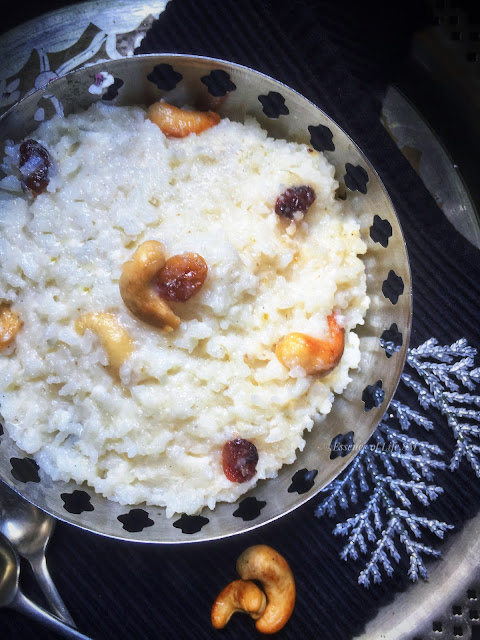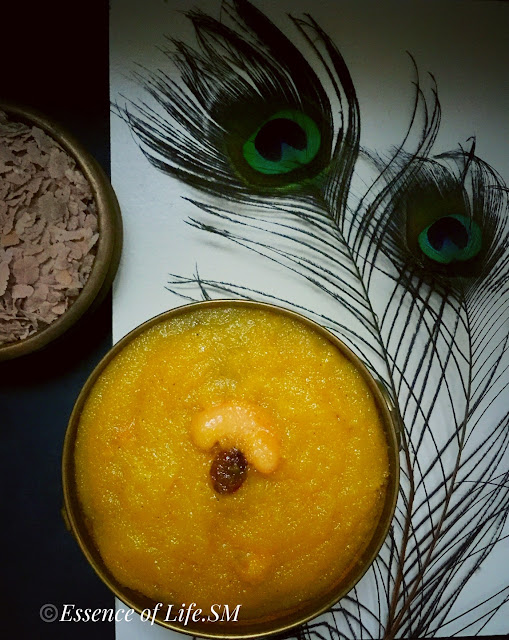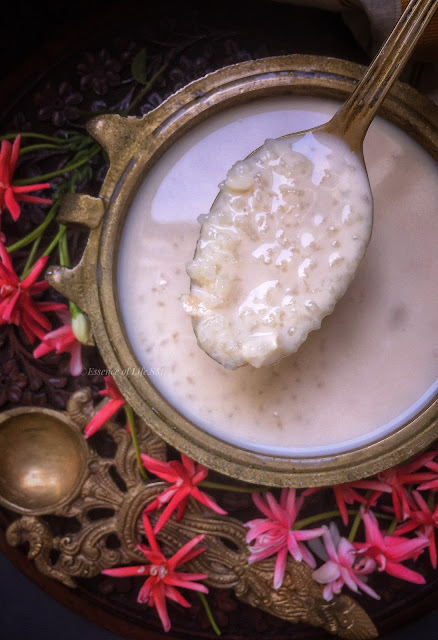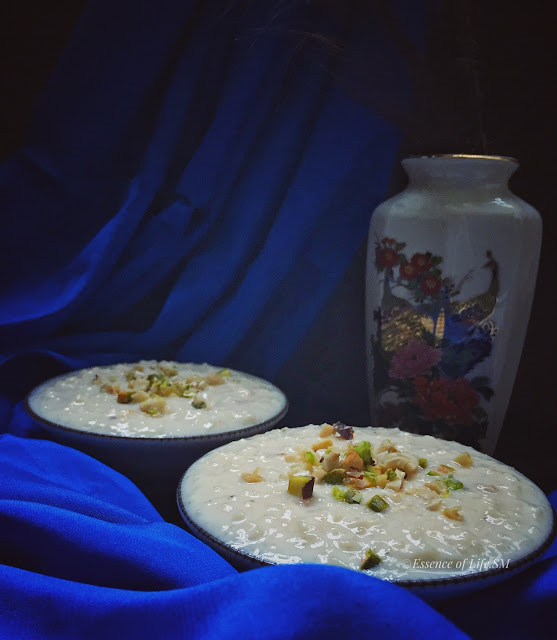 |
| Celebrate Navratri: A Delicious Spread of Sundals, Pongals, and More for the Gods |
"Embracing the Spirit of Navratri Through Food and Memories"
Cherished Festival Memories
While I may not actively celebrate Navratri, this festive season holds a special place in my heart, filled with cherished memories. Growing up in a vibrant neighbourhood, we embraced a rich tapestry of communal festivals, including Diwali, Pongal, Tamil and Malayalam New Year, Onam, and Karthigai. Our celebrations also extended to Eid, Bakrid, Christmas, Easter, and New Year. The joy of sharing delicious festive delicacies was a significant part of these celebrations, leaving a lasting imprint on my memory.
Food and Memories Intertwined
Food and memories are deeply intertwined for me. I fondly recall the Biriyani for Id, Fruit Cakes for Christmas, Murukku & Sweets for Diwali, and Sundal for Navratri. Now, living in a culturally diverse community, I’ve embraced new culinary delights, like Dates, Nasi Briyani, Ketupat and Rendang for Hari Raya, Mandarins during the Lunar New Year, and eagerly await moon cakes during the Autumn festival. Each festival brings a wave of cultural indulgence and food-related memories.
Nostalgia Through Cinema
Recently, my brother Siva Prasad from Realworks Studios shared a trailer for the latest Tamil movie, "Sabapathy," which beautifully depicted Golu and Navratri celebrations. The trailer sparked nostalgic memories of Pattu Pavadai, Golu hopping, singing bhajans, and enjoying sundal and pongal.
Celebrating Saraswati Pooja
During Saraswati Pooja, we performed pujas at our tailoring shop, marking a joyful day when we could set aside our books and studies. The day would start with my parents and me cleaning, adorning our home with sandhanam and kunkumam on everything special — from doors and televisions to my dad's bicycle and even our pens and pencils, all in hopes of securing good marks in our exams. Those were innocent days, and I often chuckle at the antics we pulled.
Delicious Naivedyam Delights
Every family has its own unique offerings when it comes to naivedyam, deeply rooted in tradition and regional practices. These cherished recipes are often passed down through generations, reflecting the cultural diversity and personal touch that each household brings to the sacred act of offering food to the divine.
My mother always prepared Sarkkarai Pongal and Pachai Pattani Sundal as her default naivedyam for Saraswati Pooja, accompanied by puffed rice (pori), orange mittai 😋, and seasonal fruits. The delightful aroma of chrysanthemums, the flower synonymous with Navratri, still lingers in my mind.
Navratri: Celebrating the Goddess with Devotion and Delicacies
Navratri, meaning "nine nights," is a sacred festival observed across India to honour Goddess Durga. Each day of the festival is dedicated to one of her nine cosmic forms, celebrated with fasting, prayers, and the offering of naivedyam or prasadhams.
Navratri in South India:
In the southern parts of India, Lalitasahasranama is often recited during Navratri, and rice-based dishes, without onion or garlic, are offered as prasadam to Goddess Lakshmi. In Karnataka, the festival culminates in grand Dussehra celebrations, especially in Mysore, where the iconic Mysore Palace is lit up, and a royal procession known as the Jumbo Savari takes place. Elephants, decorated with rich finery, carry the idol of Goddess Chamundeshwari through the streets, accompanied by music, dance, and colourful tableaux, making it a spectacular event that draws visitors from all over the world.
Durga Puja in West Bengal:
In contrast, Bengali Durga Puja, celebrated primarily in West Bengal, is a vibrant and artistic festival honouring Goddess Durga’s victory over the buffalo demon, Mahishasura. For five days, elaborately crafted idols of the Goddess are worshipped, and the city streets come alive with stunning pandals (temporary structures), cultural performances, and traditional feasts. The festivities end with Sindoor Khela (vermillion play) and the immersion of the idols in rivers, symbolising Durga's return to her heavenly abode.
Navratri Recipes!
In honour of Navratri, I’m excited to share a collection of delightful sundals, snacks, and sweets that can be offered as naivedyam and prasadhams throughout the nine days of Navratri celebrations, culminating in Vijay Dasami.
*Click on the individual pictures below for detailed recipes!
This year, Navratri will begin on Thursday, 3 October 2024, and ends on Saturday, 12 October 2024.
Additionally, I’ve included two essential items that hold a special place in the naivedyam list:
Panagam & Panchamirtham: Essential Naivedyam Delights
These two dishes are integral to the festive offerings during Navratri, embodying tradition and divine flavours. Panagam is a refreshing drink, while Panchamirtham is a sweet mix that symbolizes prosperity and health.
Panagam
Panagam is a traditional South Indian beverage made from jaggery, water, and spices. Often enjoyed during festivals, its balance of sweetness and spice makes it a perfect offering for Naivedyam during Navratri.
Panchamirtham
Panchamirtham, a sacred mixture of five ingredients — jaggery, banana, ghee, honey, and cardamom — is not only delicious but also represents the divine offerings made to deities during worship. This sweet blend is a favourite during Navratri celebrations.
Sundal Varieties
Significance of Sundal Varieties
Sundal, made from various legumes, holds a special place during festivals. Each variety not only satisfies hunger but also embodies the spirit of sharing and community. These wholesome dishes are often infused with spices and coconut, enhancing their flavour while symbolising the joy of coming together in celebration.
Sundal is the star of the show during Navratri celebrations! This simple stir-fry made with beans, lentils, or legumes not only tantalises the taste buds but also fits beautifully into the festive spirit. Many families enhance their sundal with Sundal Podi, a convenient spice mix that elevates the flavour profile, especially on the busy days of Golu and Navratri.
Nine Varieties of Sundal for Nine Days
Each day of Navratri can be celebrated with a different type of sundal, showcasing the diversity and richness of Indian culinary traditions. Here are nine delightful varieties to try:
Sundal Podi - An Essential Spice Mix for Navratri Sundals
Sundal Podi:
Sundal Podi is a fragrant spice mix that elevates the taste of sundal, making it a must-have during Navratri celebrations. This versatile blend enhances the flavour profile of various sundal varieties, bringing together the warmth of spices and the richness of lentils.
Snacks for Naivedyam/Prasadham
Navratri celebrations are incomplete without a variety of traditional snacks offered as naivedyam or prasadham. Whether it’s a savoury treat or a sweet indulgence, these snacks bring a festive touch to the celebrations and are enjoyed by all.
Savoury Snacks
These crunchy and flavourful savoury snacks are perfect offerings during Navratri and are sure to please the palate of both devotees and guests alike:
Sweet Snacks
Navratri’s sweet prasadham is a symbol of love and devotion. These sweets are traditional favourites that enhance the festive spirit:
Sweet Offerings for Naivedyam
When it comes to sweets, the options are plentiful. Any sweet can be served for naivedyam, whether it's pongal, kesari, kheer, payasam, or other Indian sweets. Each sweet has its own significance, often representing purity, devotion, and gratitude. Moreover, you can choose a suitable sweet for each day of Navratri as naivedyam, aligning with the themes of the respective goddess worshipped:
Significance of the Nine Days:
- Day 1: Goddess Shailputri – Offering ghee brings blessings of good health (Sarkkarai Pongal).
- Day 2: Goddess Brahmacharini – Naivedyam prepared with white sugar ensures longevity (Rava Kesari).
- Day 3: Goddess Chandraghanta – Milk-based naivedyam absolves sins and grants courage(Paal Payasam).
- Day 4: Goddess Kushmanda – Malpua is offered for health, wealth, and strength(Malpua).
- Day 5: Goddess Skandmata – Banana-based dishes bring prosperity (Banana Halwa).
- Day 6: Goddess Katyayani – Honey is offered for beauty and charm (Panchamirtham).
- Day 7: Goddess Kaalratri – Jaggery-based offerings ward off negative energies (Thengai Paal Payasam).
- Day 8: Goddess Mahagauri – Coconut offerings ensure health and prosperity (Coconut Barfi).
- Day 9: Goddess Siddhidatri – Dishes with sesame seeds grant divine powers (Sesame Ladoo).
Pongal Varieties for Naivedyam/Prasadham
Sweet Pongal is a classic dish offered as naivedyam during Navratri, symbolizing prosperity and gratitude. Each day of Navratri, a unique Pongal variety is made, filled with the richness of jaggery, ghee, and nuts, making it a divine offering to the gods and a delicious treat for all.
Kesari Varieties for Naivedyam/Prasadham
Kesari, a rich and delightful semolina dessert, is one of the most cherished offerings during Navratri. With its golden hue and sweet aroma, it brings a divine touch to naivedyam, making each day of celebration sweeter and more special.
Payasam Varieties for Naivedyam/Prasadam
Enjoy these delightful Payasam varieties offered during festivals and celebrations!
Explore More Payasam Varieties. Click here for more delightful Payasam varieties!
Kheer for Naivedyam/Prasadam
Offering to the Goddess:
In North India, especially during Durga Puja, kheer is often prepared as a naivedyam (offering) to Goddess Durga. It symbolizes purity and devotion, serving as a way to express gratitude and seek blessings.
Festive Spirit:
In Gujarat, kheer is often made with rice or vermicelli and is flavored with cardamom. It is commonly offered during Navratri as a symbol of auspiciousness and devotion. The locals might also prepare variations like Basundi, a thicker version of kheer made with condensed milk, especially during festive occasions.
Rajasthani households often prepare Ghevar (a disc-shaped sweet) alongside kheer during Durga Puja. Kheer serves as a staple offering in many households, showcasing the rich culinary traditions of the region.
Explore these delightful Kheer varieties perfect for your Naivedyam offerings. Check out more Kheer Recipes on my blog!
Sweets for Naivedyam/Prasadam
Celebrate the divine occasion with these traditional Indian sweets, perfect for Naivedyam or Prasadam. Each sweet holds a unique place in our cultural celebrations and is sure to add sweetness to your festivities.
Explore more traditional Indian Sweet Recipes here. |
Bengali Sweets for Durga Puja Naivedyam
During Durga Puja, sweets hold a special place in every Bengali household. These naivedyam offerings are not only a symbol of devotion but also a delicious way to celebrate the festive spirit.
Sweet Offerings for the Goddess
Explore More Bengali Sweets
For more delightful sweets perfect for the festival, check out these recipes:
- Rose Mishti Doi - A floral twist to the classic sweetened yogurt.
- Kala Jamun - A rich dark version of the traditional sweet.
- Gulab Jamun - Soft and spongy sweets soaked in sugar syrup.
- Cham Cham - A Bengali delicacy perfect for festive celebrations.
- Rabdi - Creamy and rich dessert made from thickened milk.
Explore these delicious sweets, all perfect for Durga Puja, and make your celebrations even sweeter
Festivals: A Feast for the SensesIn India, whether it is South or North or to the East or West, festivals are all about good food and fun. For the people of North India, nine days of Navratri means fasting. For people in Gujarat, it is all about playing Garba and Dandiya to Rajasthan. I relate Navratri to Bengal, Durga Puja, or the Pujo for the people in Bengal. Durga Ma's picture with huge eyes and red tilak and huge idols of goddess Durga captures the essence of devotion. If you want to dive deeper into the flavours of these festivals, explore our Traditional Recipes that celebrate this rich culture. When it comes to the South, in Tamil Nadu, I relate Navratri with Golu. In Kerala, it is celebrated as Saraswati Puja with a special Vidhyarambham ceremony. Join me as I uncover more fascinating traditions! The Rich Tapestry of Indian TraditionsDiversity is what thrives in India. With varied customs and rituals, each festival is given a distinctive regional flavor. Traditions and practices are closely etched to each festival, creating a vibrant tapestry of celebration. The style of celebration is unique in each state, but the moral of the story remains the same: "victory of good over evil." Navratri is a season to FAST & FEAST and to celebrate the power of femininity. Don’t miss out on finely curated list of Indian Sweets and Festive Recipes! Be sure to check them out and bring the festive spirit to your kitchen! |



















































































